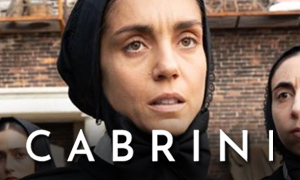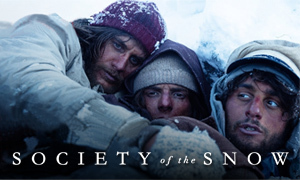Beauty and the Beast: History vs. Hollywood
| REEL FACE: | REAL FACE: |
Dan Stevens
Born: October 10, 1982 Birthplace: Croydon, Surrey, England, UK | Petrus Gonsalvus
Born: 1537 Birthplace: Tenerife, Canary Islands, Spain Death: abt. 1618, Capodimonte, Italy |
Emma Watson
Born: April 15, 1990 Birthplace: Paris, France | Catherine Gonsalvus
Birthplace: France Death: 1623, Capodimonte, Italy |
Did the true story involve a curse?
No. The real Beauty and the Beast story didn't involve a magical spell placed on a prince for his arrogance. Unfortunately, that also means no talking clock, teacup, candelabra, etc., as you might have guessed. The real "Beast" was a man named Petrus Gonsalvus, who suffered from a genetic condition known as hypertrichosis (also known as Ambras syndrome), which is defined by an abnormal amount of hair growth on any part of the body in excess of the regular amount present in people of the same race, age and gender. In Gonsalvus' case, it affected his entire body. It has also been referred to informally as werewolf syndrome because the appearance is akin to the mythical werewolf. Excessive hair growth is the only known effect of the condition. No, it did not cause Gonsalvus to have an oversized body with huge muscles like the Beast in the Disney movies.
Did the true story behind Beauty and the Beast happen in the same time period as the Disney movies?
No. Petrus Gonsalvus and his wife Catherine met in 1500s France. Their widely-known story is thought to have inspired Gabrielle-Suzanne Barbot de Villeneuve's 1740 French fairy tale Beauty and the Beast. The best known version of Villeneuve's story and the basis for the films was written 16 years later by Jeanne-Marie Le Prince de Beaumont and was geared more toward young ladies than adults. The fashions in the Disney movies indicate that the time period is the mid to late 1700s, which is reflective of the time period of the fairy tale, not of the true story that inspired it.
Was the real "Beast" a prince?
No, but he does have connections to French royalty. Petrus Gonsalvus was born in 1537 on the Canary Island of Tenerife, the largest of Spain's seven Canary Islands off the coast of West Africa. At a young age, Gonsalvus was treated as an uncivilized curiosity. The hairy "wild man" was captured and put into an iron cage. For food, he was given raw meat and animal feed. He was shipped to King Henry II of France as a gift for the king's coronation in 1547.
Fortunately, King Henry II did not see Gonsalvus as a freak that should be kept in a cage. The king recognized Gonsalvus' calm demeanor and decided to try an experiment. He would attempt to educate and transform him into a gentleman. The king allowed him to keep his birth name, Pedro González, but only if he used its Latin form, Petrus Gonsalvus. The boy was given clothes and cooked meals. He was taught to speak, read, and write in not just one, but three languages, receiving the education of a nobleman. The royal court was impressed and his social status rose. Yet, most still viewed him as less than human.
How did Petrus Gonsalvus meet his "Belle"?
The real Beauty and the Beast met after Gonsalvus' mentor and protector, King Henry II, was killed in a jousting match on July 10, 1559. Gonsalvus became the property of the king's widow, Catherine de Medici, who became ruler and decided to conduct her own experiment with Gonsalvus. She wondered what would happen if her "beast" married a beautiful woman. Would they conceive little beasts? She found a wife for Gonsalvus, a young maiden also named Catherine, who was the daughter of a royal court servant.
Petrus Gonsalvus met his wife Catherine for the first time on their wedding day. The pair had seven children, with four of the seven suffering from their father's condition, hypertrichosis. This delighted the king's widow, who had succeeded in creating a "wild family."
What happened to Petrus Gonsalvus and his family?
The real Beauty and the Beast and their children toured European countries and cities, eventually settling in Parma, Italy where they were employed (owned) by Duke Ranuccio Farnese. The duke commissioned several paintings of the family, but none featured the three unaffected children, as they were not considered curiosities. Unfortunately, the four of their seven children afflicted with their father's condition were exploited by the duke and sent away as gifts, becoming pets of the upper class (to own such an "oddity" was a sign of one's noble status).
Petrus and Catherine were married for more than 40 years, with Catherine passing in 1623 and Petrus several years prior. There is no record of his death, possibly because he was not considered a human being worthy of a Christian burial, and therefore his death was not recorded. Petrus was last mentioned in the year 1617 at the christening of his grandson, and he is believed to have passed away sometime around 1618. The family's story spread throughout the region, eventually becoming the inspiration for one of the most popular love stories in literature, and subsequently, modern cinema.
How many people in the world suffer from hypertrichosis, the condition that affected the real "Beast," Petrus Gonsalvus?
In researching the Beauty and the Beast true story, we learned that only about fifty people in the world are currently known to have the genetic condition. Though hypertrichosis is commonly called Ambras Syndrome, the two are indeed separate conditions. As stated earlier, hypertrichosis can visibly affect people in two ways. General hypertrichosis means excessive hair grows all over the body, while localized hypertrichosis means only certain parts of the body are affected by abnormal hair growth. Watch a short video segment about a modern-day family afflicted with hypertrichosis.
How do Disney's Beauty and the Beast movies differ from the original fairy tale?
Another notable character who is absent in Beaumont's fairy tale is Gaston, the sexist villain who attempts to charm Belle with his brawn in the Disney movies. In the original fairy tale, Belle has two older sisters who treat her horribly (à la Cinderella). When the Beast allows Belle to go visit her family, the sisters trick her into staying longer than the week that the Beast allowed her to be gone, hoping the Beast would devour her for not returning in time. Belle has a nightmare of the Beast dying and realizes that she loves him despite his appearance. She returns to find that he has starved himself for each day she did not return to him. She confesses her love and the spell is broken, with the Beast alive in his human form.
Werewolf Syndrome Documentary & Related Videos
Dig deeper into the Beauty and the Beast true story by watching a short documentary segment on hypertrichosis, the genetic condition that affected the real "Beast," Petrus Gonsalvus. Then watch a video that presents a comparison of Beauty and the Beast to the original story.
Link-to-Learn More:







